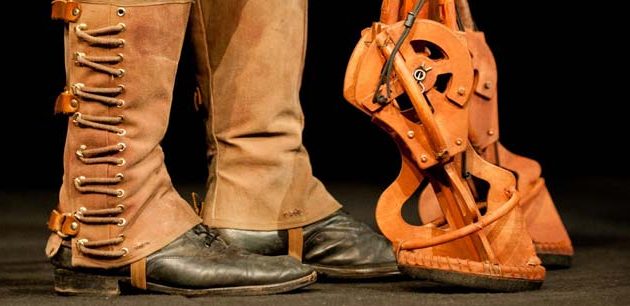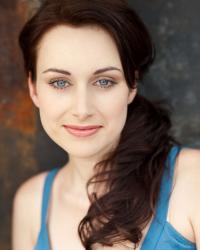War Horse Finds A Play Mate – in conversation with Finn Caldwell
Emily Paddon-Brown spoke with Associate Puppetry Director of the multi award winning play War Horse, Finn Caldwell, and uncovered some little known facts about the show, the puppets and his position within the company…
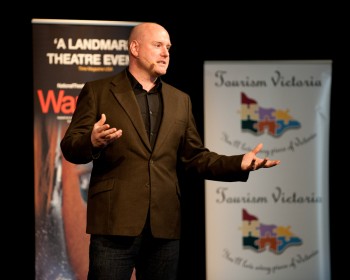
Finn Caldwell, Associate Puppetry Director for War Horse, took some time out of his busy trip down under to have a chat with AussieTheatre this week. My first (albeit straightforward) question was to ask how one actually ends up being an Associate Puppetry Director: A title that simultaneously provokes images of grave seriousness and wonderous fun.
While he admits it is sometimes difficult to explain his profession to those outside the arts industry, it is evident that Caldwell’s passion for puppeteering grew out of experiences in acting and a love of the theatre.
“I was doing a lot of Shakespeare and Greek stuff… I was very lucky” he said.
“Five years out of drama school I thought to myself ‘I’m not really doing what I love here’. I’d always been fascinated by puppets and mask.”
His love affair with puppets began while experimenting with physical theatre companies in England, where started to create his own prototypes – including a life size puppet of the Elephant Man. When Caldwell realised he need some guidance in manipulating the puppet he was introduced to an English puppet company where in turn he brought his skills as an actor.
“I was bringing an actor’s real rigor in approach to character, personality, motivation and objectives and all of that stuff. I wasn’t interested in any way of cutting the corners of the level of quality of the drama when we were working the puppets.”
Then, the National Theatre in London – who knew Caldwell as an actor – came knocking for his puppetry expertise in the research and development periods of War Horse.
“I walked in the door and I saw the prototypes for these horses and I saw shadow puppets interacting with humans interacting with horse puppets and I just knew I had to do that… I was just completely hooked.”
[pull_left]I can’t believe it, our show that still feels small, personal and intimate is just doing these incredible things around the world[/pull_left]
UNEXPECTED SUCCESS
When Caldwell and his peers began this journey, none of them expected War Horse to be a hit. They knew they were in new territory and they saw it as a big risk, but one worth taking. When the show opened at the National Theatre in Great Britain for a limited six week run, the creative team suggested gently that cast members avoid reviews. The general consensus was that the show would end up being ‘that quirky show’ that they put on at the National.
“We were shocked when we got invited to come back and do it again at the National theatre”, Caldwell recalls.
The second season at the National transferred straight to the West End, then War Horse opened in New York and now they’re coming to Australia. But Caldwell says that he has gratitude at each step.
“I can’t believe it, our show that still feels small, personal and intimate is just doing these incredible things around the world”, he said.
Caldwell says the entire cast will be Australian which, with the LPA currently up in the air about casting practices, is wonderful to hear.
“It has to have heart and soul and it has to be a response to the place that it’s in,” he says, explaining how how each country’s puppeteers bring different experiences to the puppets therefore breathing a different life and personality into each animal.
PUPPETRY ON THE WORLD STAGE
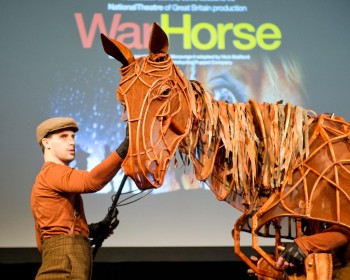
Caldwell is visibly passionate about the work that he does. With puppetry featuring prominently in performance at the moment (think Avenue Q, Walking with Dinosaurs) he and his colleagues question the movement:
“Are we standing at the foot of a mountain or are we riding the crest of a wave?’
And certainly Caldwell hopes that War Horse is not the pinnacle but the beginning of something big. He muses that puppetry will have to continue to adapt and push boundaries and credits War Horse as having done something unique;
‘War Horse; it’s central character is a puppet that doesn’t speak and that is an animal, but it’s not even an animal representing a human being, which is what we often see. It’s an animal being an animal. And we’re asking the audience to be engaged with that for more than two hours as the central character. That’s pretty extraordinary. And the fact that we’re pulling it off and people are loving it and are totally over whelmed by it is extraordinary to us!’
When asked how the puppeteers cope with the physicality of their job he says:
“It’s a bit like training a sports team,” he laughs.
Training is very rigorous, with some very odd muscle groups needing to be strengthened to cope with the puppets movements. He says it is too physically demanding for puppeteers to perform eight shows a week so they have rotating teams. Four teams alternate shows to perform the two main horse characters.
Having discussed the strain on the puppeteers it was time to cross to the puppet’s themselves. So obviously my next question was to ask about the biggest puppet fail. Caldwell set the scene where the two main horses meet and how they must fight to assess who is the dominant horse. They kick, barge and charge at each other.
“This is really hard core on the puppets”, he said. “One evening after this scene Joey was left with a hind leg hanging by wires.”
However, it appears the backstage team is well equipped to deal with such disasters – Joey takes a casual walk off stage in the following scene and “Exactly like the Grand Prix” his leg is electric drilled off and a new one is drilled on.
THE QUEEN
Being the kind of person I am I had read that the Queen had come to the show and had to ask Caldwell about it. He said it was announced to the cast on the evening of the show even though she had been booked to see it for a while (security purposes). Once the house lights were out she was ushered into her seat in darkness before the show and same deal again at interval- she is ushered out before the interval lights were up. Apparently the audience figured it out pretty quickly and the atmosphere was palpable.
“As the show went down everyone clapped, they finished clapping and she stood up and did the old…” (at this point Caldwell does his best impressions of the Royal wave – where the Queen invited the audience to once again applaud the cast’s good work.)
Caldwell speculates that War Horse could be Her Majesty’s favourite show: “The Windsor’s are very horsey”, he quipped.
THE SHOW CRUSH
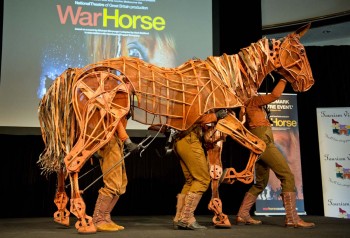
When asked which puppet he has a show crush on, Caldwell at first is diplomatic.
‘It’s very important for me to step away from the roles that I originally played so that I can have an equal interest in all the puppetry that’s being created’
But it becomes clear that a role he has previously played in the show is very much his crush:
‘I used to play the Heart and front legs of the horse and you’re really the passion of the horse, you’re the breath, the aggression and the acceleration and I miss that. I miss it.’
The three puppeteers (aptly named ‘Head’ ‘Heart’ and ‘Hind’) are the life force behind the movements Joey can make, and each have a technical task which gives Joey emotional indicators.
‘It’s the most satisfying theatrical performance I’ve ever given and the response from the audience is the most generous and heart felt I’ve ever experienced. I’m gushing’
And he is and I love it. Make sure you share in this passion and book yourself a seat to War Horse.

